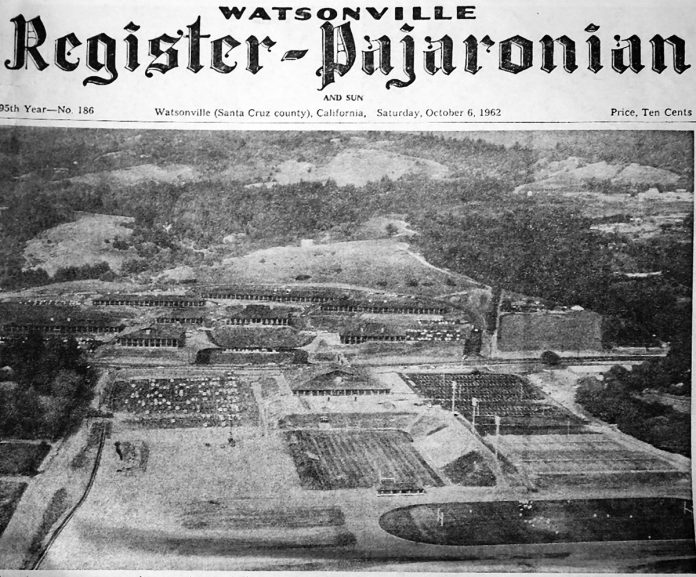
WATSONVILLE—Cabrillo College got its start six decades ago in several condemned buildings in an unused corner of Watsonville High School.
More than 800 freshmen began classes there on Sept. 1, 1959.
The community college has since evolved into a mid-county educational centerpiece, serving more than 15,000 students every year at two campuses.
Hundreds of people came to the Watsonville campus on Nov. 3 to celebrate the college’s 60th anniversary, an event that drew such dignitaries as Hal Hyde, who served on the first board of directors.
Historian Sandy Lydon – who worked as a history professor at the school – argues that the college’s actual birthdate goes back to October 1958, when voters approved the plan to build a junior college in Santa Cruz County.
The idea first surfaced in Watsonville in 1920, when the Watsonville Woman’s Club floated the idea to the Watsonville High School Board of Trustees.
Although that idea went nowhere, educator T.S. MacQuiddy championed the idea.
In 1948 the War Assets Administration offered the 400-acre Camp McQuaide for $1, with the only stipulation was that it had to be for a junior college.
But county officials fretted that the acquisition would result in higher taxes, and the County Board of Supervisors unanimously rejected it.
The plan was also rejected by the State Department of Education, which cited the remoteness of the site. The property was eventually sold to the Seventh Day Adventist Church, which established Monterey Bay Academy.
As plans continued to coalesce for a junior college, Lydon said, students were traveling to Hartnell and Monterey Peninsula colleges, which required Santa Cruz County to reimburse the cost of their schooling.
“They made so much money on Santa Cruz County students that they provided free bus service to make it easier for the students to attend,” Lydon said. “The President of [Monterey Peninsula College] used to point to some of his buildings and declare, ‘that one was built by Santa Cruz taxpayers. Thank you!’”
And so county officials started taking the idea seriously.
But securing funding was a challenge, particularly voters used to World War II belt-tightening, Lydon said.
Voters soundly defeated the idea in 1954, with 66 percent voting no.
That changed in 1958 when county leaders acknowledging the longstanding rivalry between North and South county by agreeing that the college would be as equidistant between the two as possible.
Perhaps the strongest argument in favor of the junior college came that same year, when local officials wanted to put a UC campus in Santa Cruz, but were stymied by state rules that required a junior college to be there first.
And so it was that voters reversed the former results, with 66 percent voting in favor of the junior college in October 1958.
Residents two years later resoundingly approved a $6.2 million bond measure to help fund construction, which at the time was the largest bond the county had seen.
County officials appointed a board of directors, and Dr. Robert Swenson became the college’s first president.
The college opened its doors, by the following September, after finding a temporary place, building a curriculum and hiring instructors.
“That is one of the most remarkable things about this story,” Lydon said. “This was the GI Generation at work. They had won a war; building a college was easy.”
Historian Sandy Lydon contributed to this report.











